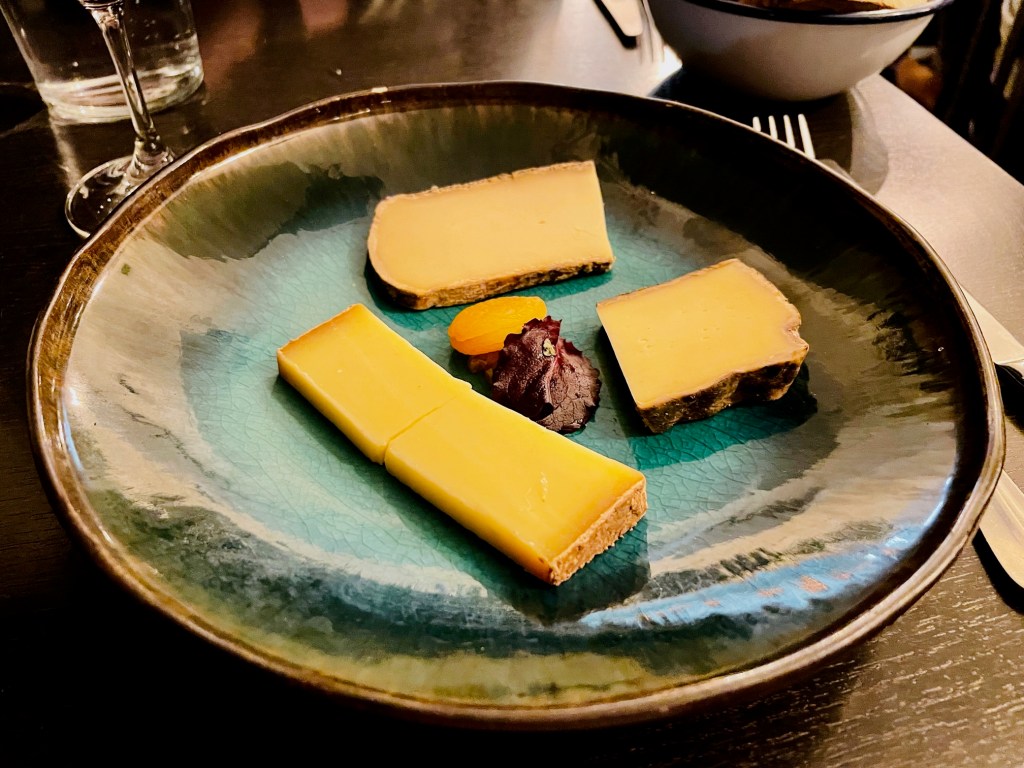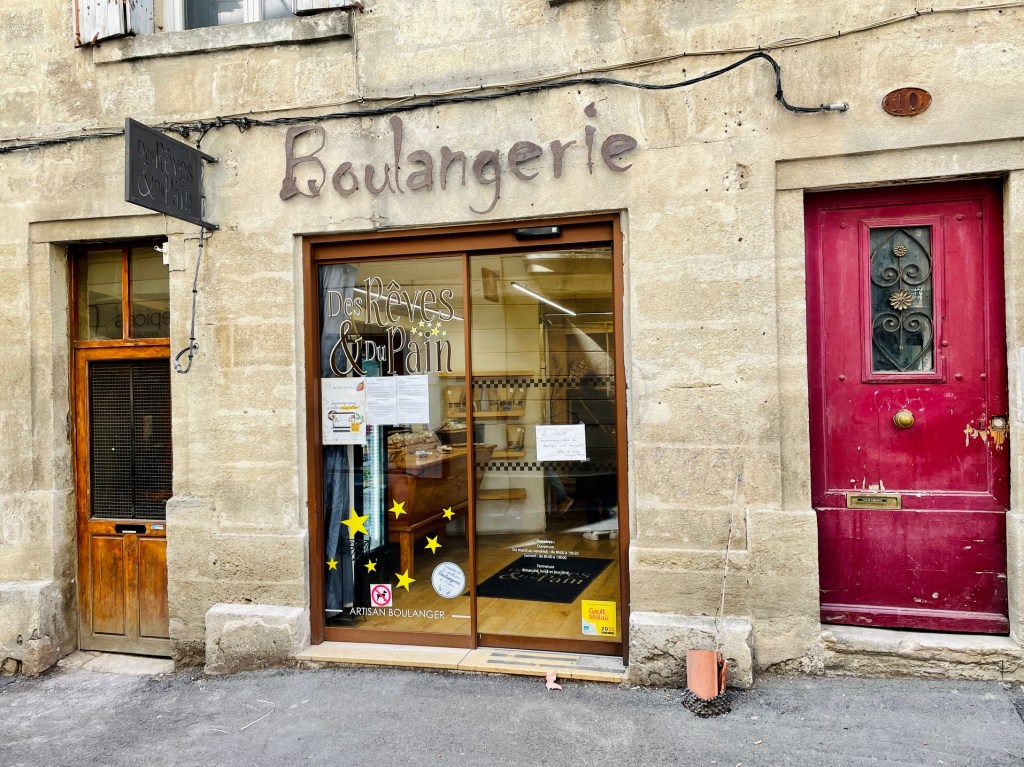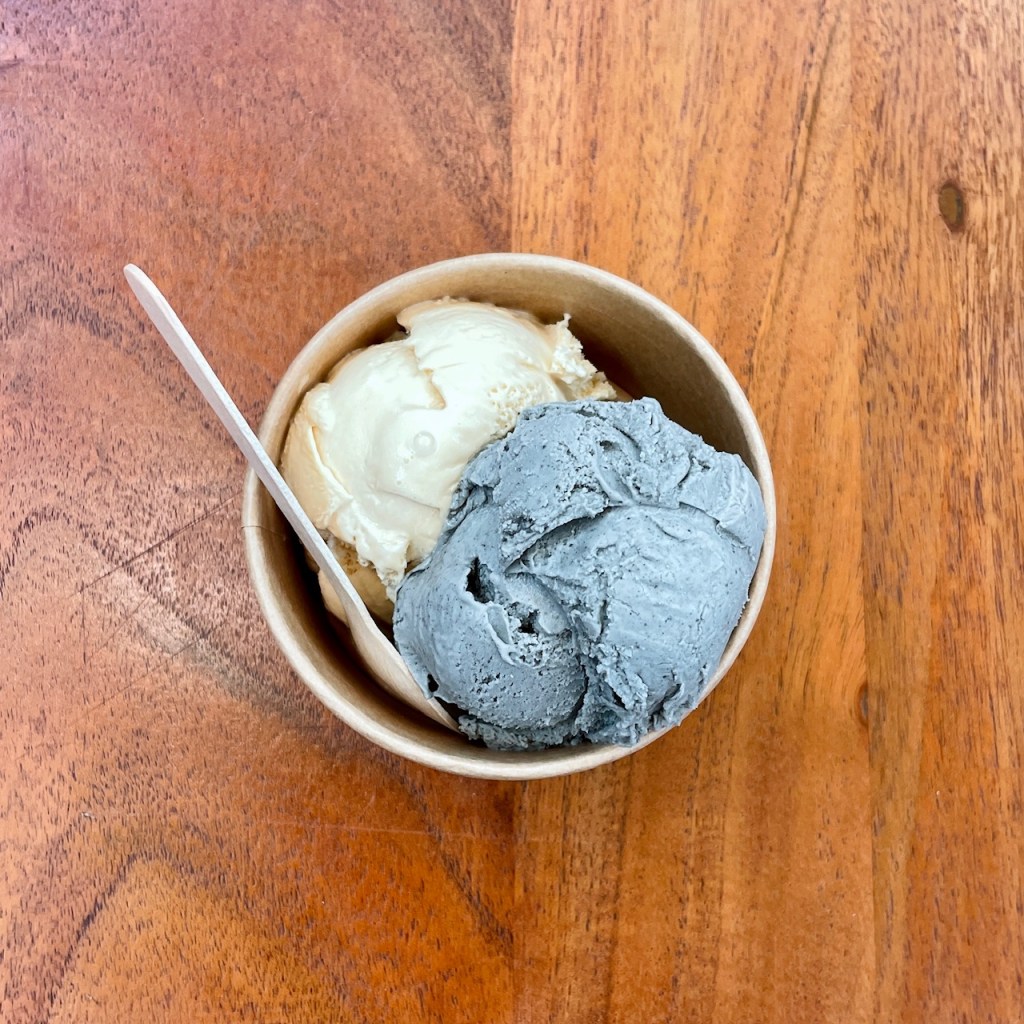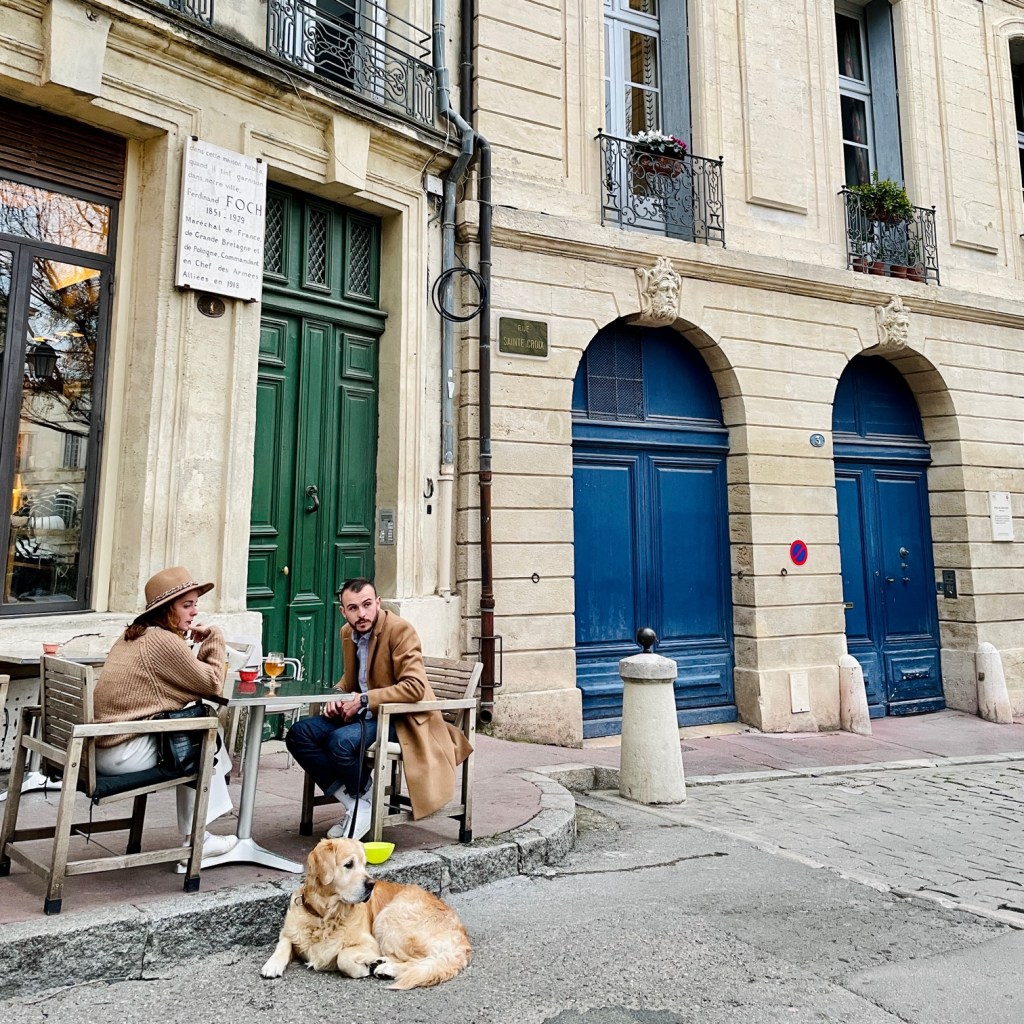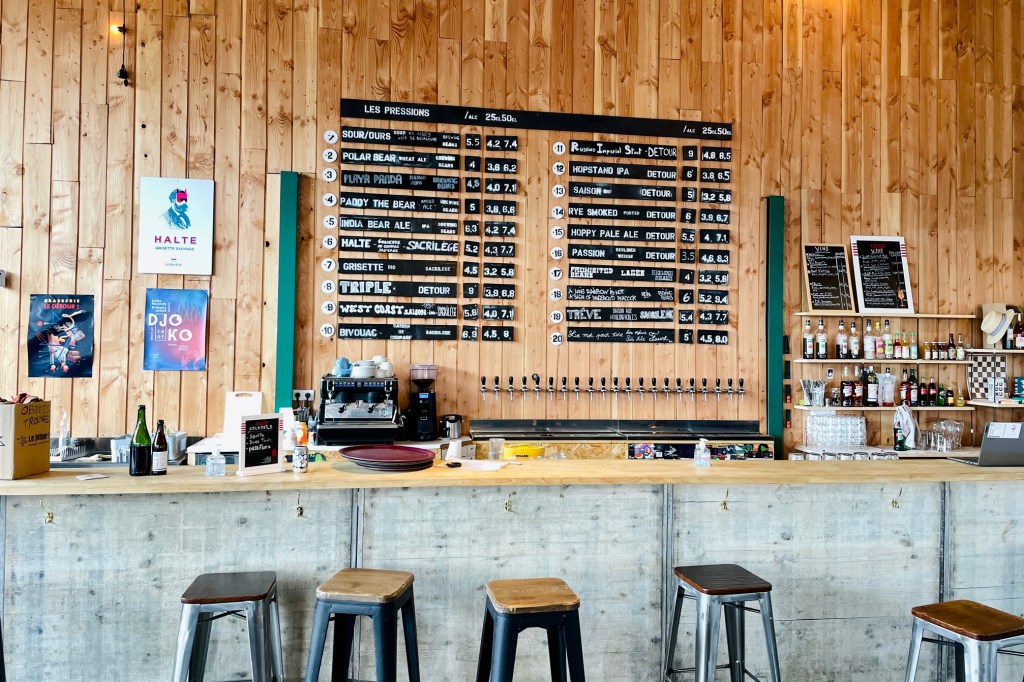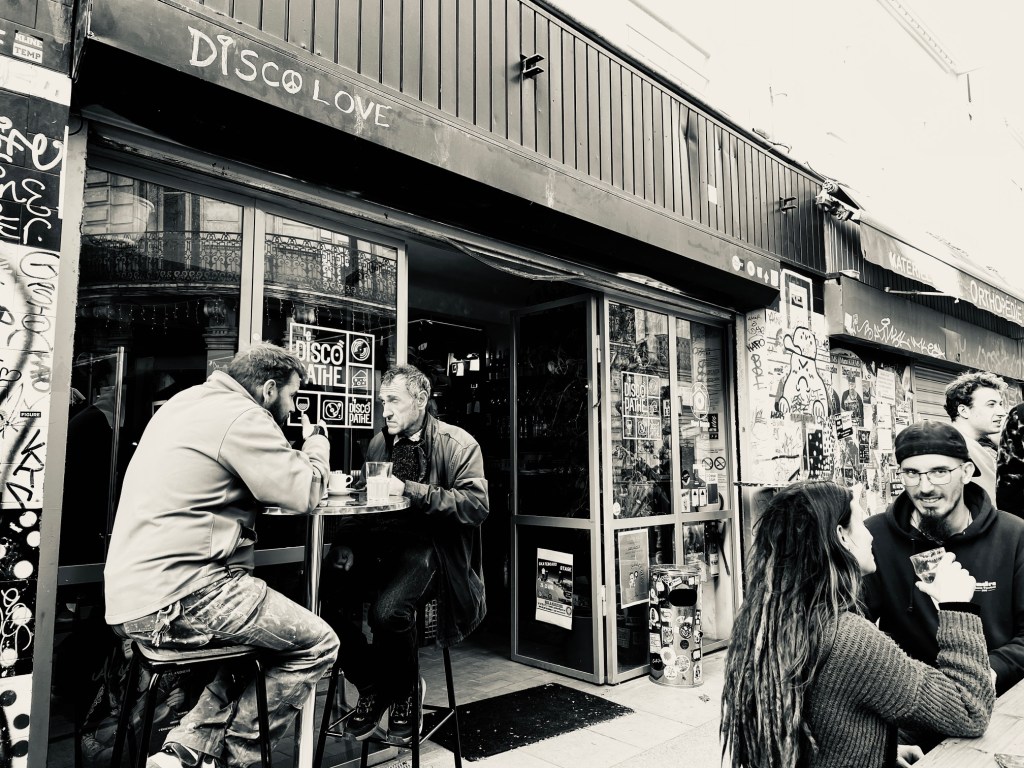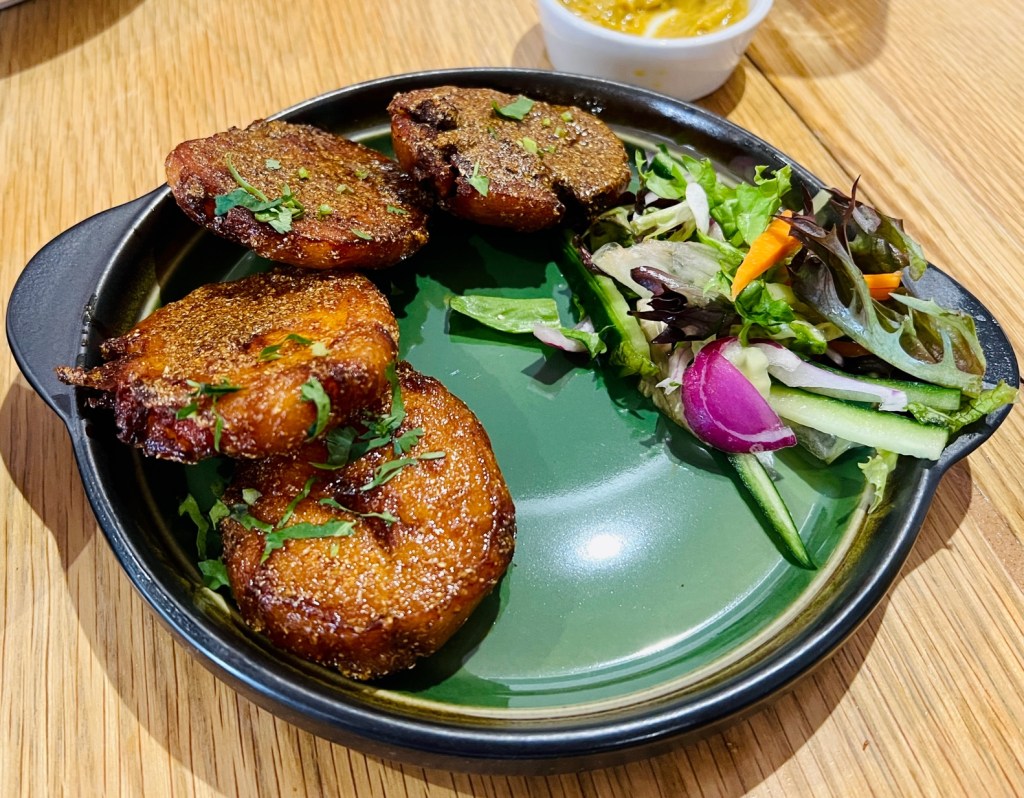I try my best, doing this restaurant reviewing lark, to visit places I think are likely to be either good or interesting, or ideally both; with a few notable exceptions, I don’t go anywhere where I think I’m definitely going to have a bad meal. And even if I have my reservations, I try to turn up with an open mind, ready to find the positives in my experience, however difficult that is. Sometimes the gods smile on me and I have a run of beautiful meals, one after the other. And that’s brilliant – exceptional meals are easier to write about, and people enjoy reading about them. Conversely, the worst thing is a run of bad meals. A succession of stinkers. That does rather break the soul.
The worst run I can remember started at the end of 2019. It began with a truly awful dinner at TGI Friday, and continued with the grisly spectacle of doner meat nachos at German Doner Kebab. But the straw that broke the camel’s back was going to the Dairy, the university bar and kitchen just down the road from the MERL. I’d always loved drinking there, especially on a hot day, but the food was bloody awful. That made three cruddy meals on the spin and nearly two months without enjoying a meal on duty: it was the kind of vale of tears that makes you seriously think about chucking the whole thing in.
Then at the start of this year, there was a surprising development: the Dairy published a completely new menu on Instagram. And it made all the right noises – beef came from the University’s farm four miles down the road, eggs were from Beechwood Farm (did you know that Beechwood Farm was run by Reading University alumni? I didn’t) and all the bread was supplied by Waring’s. Not only that, but the menu was full of the kind of things you might actually want to eat. Crispy fried chicken and pickled watermelon burger? Brisket and blue cheese ciabatta? Jerk spiced plantain and halloumi skewers? Count me in!
Something was clearly afoot at the University because a week ago Park House, its bar on campus, published a brand new spring menu. Again, it all looked distinctly tempting, and again the provenance was called out, with the beef coming from the University’s farm and name checks for the excellent Nettlebed Creamery and the Cotswolds’ Hobbs House Bakery. (Not everyone was overjoyed, mind you: I really can’t believe you won’t sell cheesy chips any more, said one comment). Park House has always been one of my very favourite places for a pint in the sunshine, but was it possible that it also offered great, affordable food under the radar? Zoë and I ventured out on a sunny spring evening to put it to the test.
It’s truly a gorgeous spot, inside and out, one of those beautiful Victorian redbrick buildings Reading so specialises in (I think I read somewhere that it’s by Alfred Waterhouse, of Reading Town Hall and Foxhill House fame: I can’t find any evidence of that, but it’s definitely in keeping). It used to be the university’s Senior Common Room, and it still has a distinctly clubbable feel inside, all dark panelled walls and solid wood floors. You could imagine trying to have an intellectual conversation in those rooms, put it that way.

And if you failed it would probably be because of the selection of beers. Park House punches well above its weight with a range many Reading pubs would envy: a dozen beers and ciders with a range of cask and keg. And again, there’s a distinctly local feel with Siren Craft, Elusive, Double-Barrelled and Phantom well represented (in fact, the most exotic drinks on the menu are from Cotswold Cider Company, a colossal 39 miles away). It doesn’t surprise me that Park House has made it onto Reading CAMRA’s Ale Trail this year and the things we tried – a couple of pales from Siren and a mild from Elusive – were yet another reminder of how well served we are in these parts for beer.
Having praised the interior, we did end up eating and drinking outside for a couple of reasons. One was that Park House was distinctly crowded: 6 o’clock on a Monday, surprisingly, seems to be peak eating and drinking time. The other, more happily, is that Park House’s outside space is a natural sun trap, and further proof – if any were needed after visiting the Nag’s Head – that there are few car parks you couldn’t improve by turning them into beer gardens. It’s a proper happy place for me, and it’s where I had my first al fresco pint last year after the longest lockdown winter of all time (14th April 2021, since you didn’t ask). So, the scene was set: was Park House going to be a surprise find, or a disappointment of The Dairy 2019 proportions? It was time to find out.

There are separate menus for breakfast and Sunday lunch, but the rest of the time Park House offers a relatively compact lunch and dinner menu – more compact than I thought, because for some reason the “Crafty Grill” section, offering burgers and hot dogs, wasn’t available. I think it’s also a Sundays only thing. So actually you have a nicely streamlined choice in front of you – less than half a dozen starters and eight mains, one of which is just a bigger portion of one of the starters. The use of “starters” and “mains” might give you the misleading idea that you can order them all at the same time to arrive at different times: don’t try this if you go there, because I just got a blank look and a polite request that you order as you go. Still, it beats the Wagamama approach of bringing anything out whenever they feel like it.
I should also add that everything is ultra-reasonably priced: most of the starters hover around the five pound mark and the vast majority of mains are less than a tenner. Laudably, they’re also trying to include calorie counts on their menu, although this seems to be a work in progress and I for one would rather they didn’t bother.
I really wanted to try the rarebit on the starters menu: Highmoor is one of Nettlebed’s finest cheeses and the thought of it bubbling away on Hobbs House sourdough – for a smidge over four pounds, into the bargain – was a delectable one. But sadly it wasn’t available, and although I was disappointed that they’d run out of either bread or cheese I was also pleased to see that they didn’t try and pass off something inferior instead.
The pick of the starters, anyway, were the smoked pork ribs. They were huge, irregular beasts that came away from the bone cleanly, and I loved the decision to give them a dry spice rub rather than slather them in sauce – so you got mustard seed, what I suspect was cumin and even some honey notes in there. They were served with a wonderfully light and clean coleslaw, and even here you could see the attention to detail, with crisp thin batons of apple and scarlet slices of chilli which added more colour than heat. Like the ribs, the coleslaw was better than it needed to be, and that’s always a winning quality.

I loved this dish, and at just under six pounds it was the kind of thing you could order just because you had a cold beer it would go perfectly with, or because the sun was out, or because it was a Monday. If only all bar food was like this. I loved it so much, in fact, that we ordered a second portion to come with our main courses: maybe there were advantages to ordering each course separately, after all.
The smoked cod croquettes were less successful, which was a pity because they leapt off the page as something I had to try. It was just weird that they came without breadcrumbs: the picture of this dish on Park House’s instagram shows the croquettes breaded, but these were lacking a coating and looked weirdly naked, as if they’d been skinned. And that had an impact in a couple of ways – it meant they didn’t have that lovely crunchy shell, but also it meant that when you cut them with a knife they sagged and deflated, like a sad party balloon.

It’s a pity, because the bones of the dish were good, with a nice whack of salt cod and a fresh and tangy tomato salsa (although again, it could have done with more heat from the chilli). Only afterwards did I realise that maybe the croquettes had no breadcrumbs for the same reason that the kitchen couldn’t serve rarebit. I daresay that if you order it, you’ll probably have better luck than I did.
Mains were uneven too but, as with the starters, the best of them showed real imagination. Confit duck salad, Zoë’s choice, was a beauty – partly because of the confit duck, which is never not good, but mostly because of what it was paired with. It could have given salad a good name, because it had so much going on – ribbons of carrot and radish for texture, segments of orange adding bright sweetness and a welcome scattering of edamame. It was all brought together by a fantastic dressing with plenty of aromatic sesame oil in the mix.

What this had in common with many great dishes from far more lauded restaurants was that every forkful could be slightly different from the last, but every bit as delicious. In an ideal world I’d have liked the duck leg to be ever so slightly bigger – so I could have tried more of it – but for less than nine pounds it was hard to fault.
I wish my fish and chips had been equally hard to fault, but it wasn’t to be. The best of it was the fish itself – beautifully cooked, the batter light, lacey and full of delicious crenellations. But the chips, which I’m pretty sure were bought in, were a little variable with a few grey patches that put me off them. There were peas, if you like that sort of thing: I don’t especially, but they were just fine. Tartare sauce was good, but there wasn’t anywhere near enough of it. And for that matter, lovely though the fish was, it was on the slender side for just over ten pounds. I couldn’t help but compare it with the colossal slab of fried leviathan you get at the Lyndhurst for eleven fifty (the Lyndhurst’s chips are miles better, too).

All in all, our meal – three starters, two mains and a pint and a half each – came to just under fifty pounds. It’s worth calling out the price of drinks in particular, too – our beers and ciders came in at around four pounds a pint, a mile away from the rarified prices you’d get in town at the Allied Arms or Blue Collar Corner.
So Park House isn’t the home run it could have been, but it was none too shabby all the same, with bags of potential. If you went there and just ate the ribs followed by the confit duck salad – Zoe’s order, but then she always picks well, present company excepted – you might well come away raving about the quality and the value. And if you went on a day when all their figurative ducks were in a row, the rarebit was on the menu and the croquettes hadn’t been flayed alive, you’d be counting the days until a return visit.
But I easily saw enough to persuade me to recommend it. The thought that had been put into the menu, the little touches in some of the dishes, the fact that they didn’t just knock up a rarebit with second-string ingredients – all of these things couldn’t help but endear me to the place. And it’s still one of the best spots, on a sunny weekend afternoon, to go with a paperback, get a drink, top up your tan and maybe accidentally-on-purpose order some ribs, because it beats yet another humdrum packet of Pipers Crisps. Are they the best bar snack in Reading? Quite possibly.
Park House – 7.3
Whiteknights Campus, University of Reading, RG6 6UA
0118 9875123








